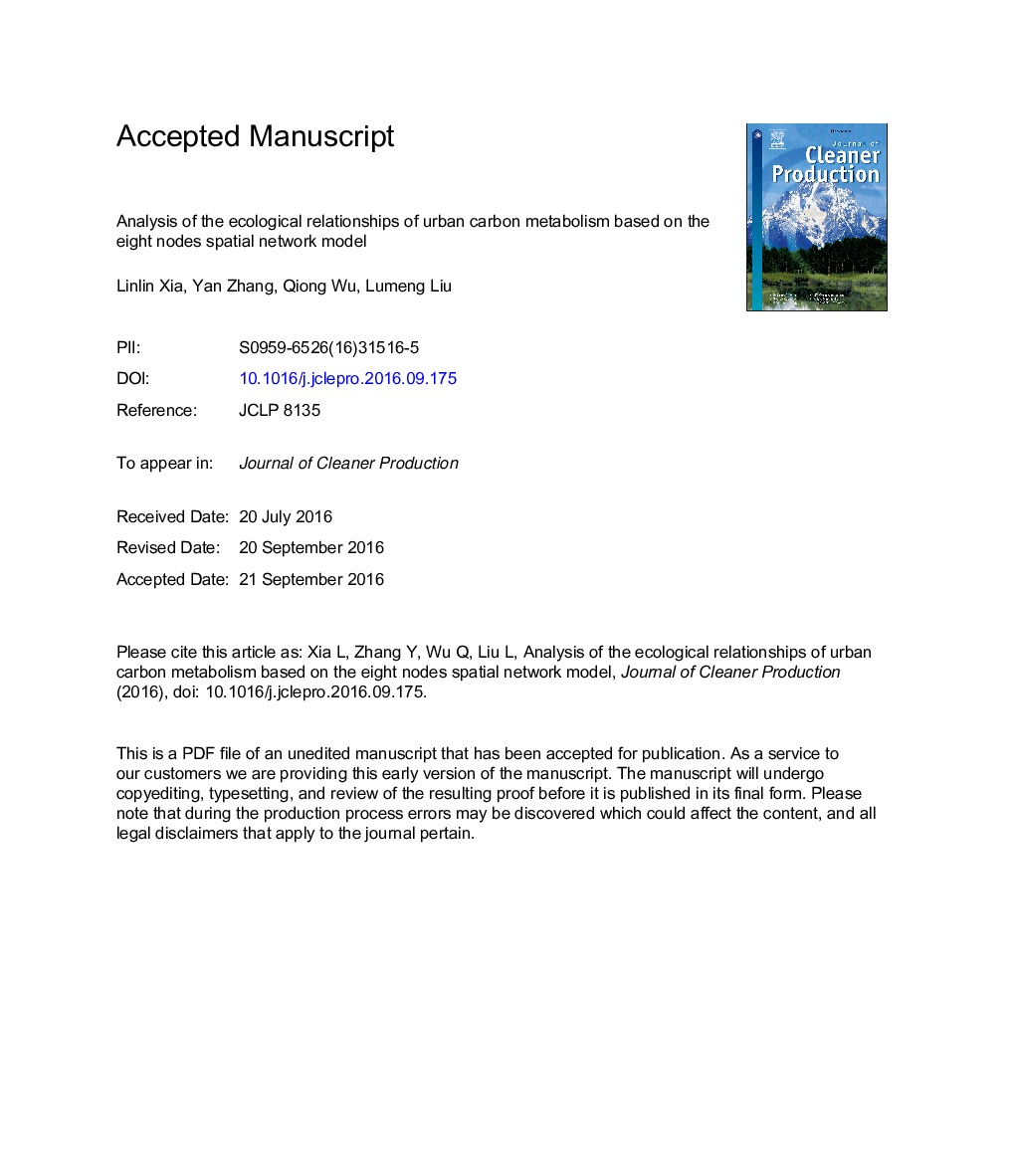| Article ID | Journal | Published Year | Pages | File Type |
|---|---|---|---|---|
| 5481423 | Journal of Cleaner Production | 2017 | 31 Pages |
Abstract
Analysis of the relationships and interactions between the bodies of carbon metabolism in an urban area can provide some new ideas for the design of a low-carbon city. In this paper, we used ecological network analysis to develop a spatially explicit model of carbon metabolism in Beijing and examined changes over time. Our goal was to identify the key elements and relationships with an eight nodes network model, with land considered as the node. Data for Beijing from 1990, 1995, 2000, 2005, and 2010 were combined with empirical coefficients to construct the network, which allowed us to quantitatively analyze the structure and function of the network and determine the key ecological relationships between components of the system, from the aspect of the system and each component. The analysis revealed that exploitation and control relationships were the dominant types that promoted the growth of the economy. The land for transportation and industry, and cultivation were the primary bodies of these two types of relationship. However, mutualism relationships maintained the stability of the system, with contributions from natural nodes and technological nodes at a low metabolic density. Simultaneously, the inevitable competition relationships somehow increased the efficiency of resource use of natural components and the cultivated land. Using quantitative simulation of carbon metabolism, we identified the negative relationships affecting healthy development of an urban area, and we offer a theoretical basis for the effective spatial adjustment of carbon management activity.
Related Topics
Physical Sciences and Engineering
Energy
Renewable Energy, Sustainability and the Environment
Authors
Linlin Xia, Yan Zhang, Qiong Wu, Lumeng Liu,
